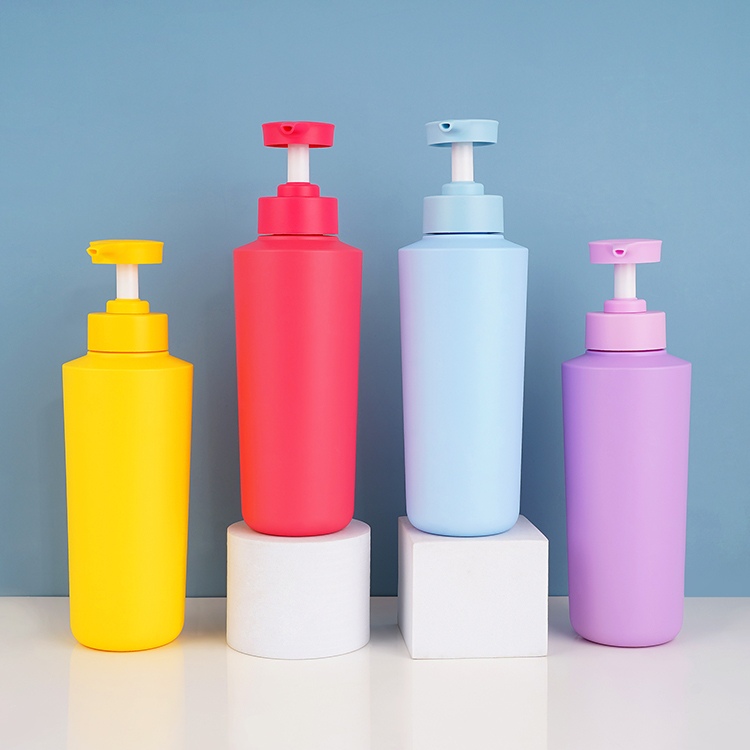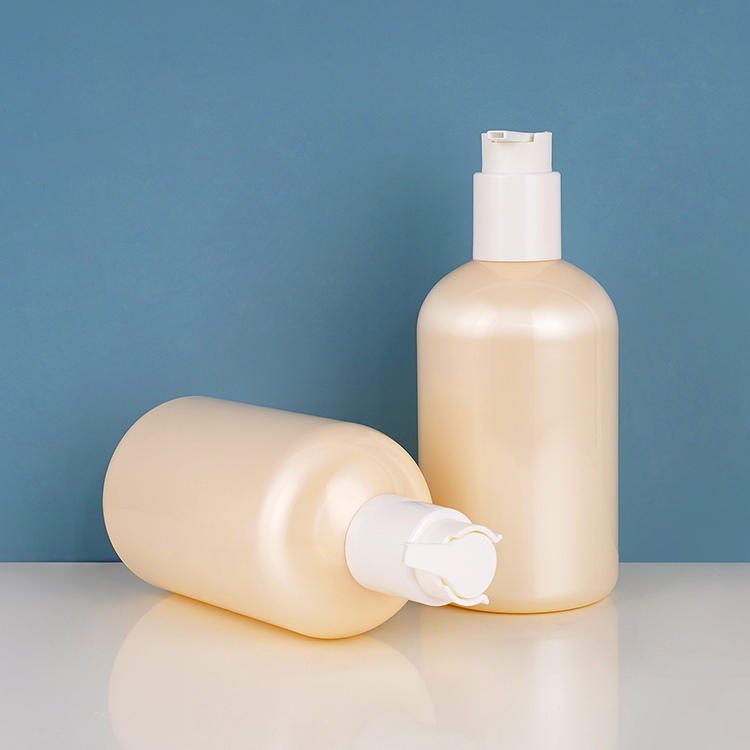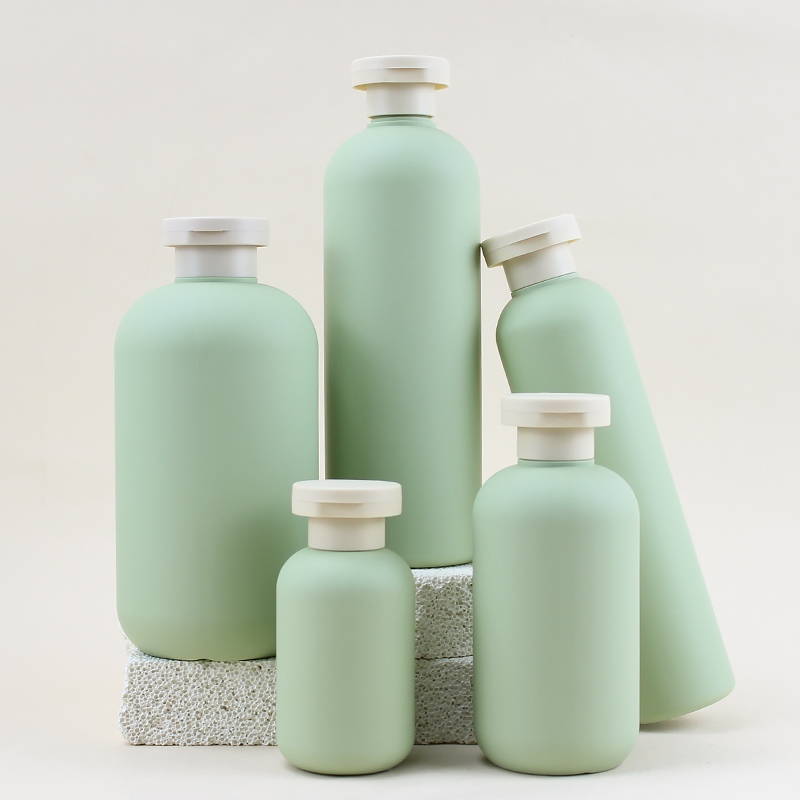The bottle blowing process is one of the key processes in the molding of cosmetic packaging materials, and is widely used in skin care and washing products. However, various quality defects often occur in the bottle blowing process, such as incomplete bottom molding, bottle mouth expansion, neck bending, etc. These problems not only affect the appearance of the product, but also may affect the stability of filling and capping. This article will analyze in detail the common quality defects and their causes in the bottle blowing process, and provide practical solutions to help manufacturers optimize the process and improve product quality.

The bottle blowing process is an important link in the manufacturing of cosmetic packaging materials. Its molding methods are diverse, including injection blowing, injection stretch blowing, extrusion blowing, etc. Commonly used bottle blowing materials include HDPE, LLDPE, LDPE, PP, EVA, PETG, PETP, etc. Although the bottle blowing technology is mature, there are still many quality defects in actual production. Starting from actual cases, this article will discuss in detail the causes and solutions of these defects to help manufacturers improve product quality and production efficiency.
The bottom contour of the bottle is not ideal, especially the bottom corner is concave, which affects the stability of the bottle.
Insufficient high-pressure gas: The high-pressure gas pressure is lower than 28BAR, resulting in incomplete bottom molding.
Uneven temperature: The temperature in the bottom corner area is insufficient and the material distribution is uneven.
Improper blowing time: The high-pressure blowing time is too short or the pre-blowing time is too long.
Blocked exhaust holes: The exhaust holes of the bottom mold are blocked and the gas cannot be discharged smoothly.
Adjust the high-pressure gas pressure: Ensure that the high-pressure gas pressure reaches more than 28BAR.
Optimize temperature control: Increase the heating percentage or the number of lamps in the bottom corner area.
Adjust the blowing time: Shorten the pre-blowing time and extend the high-pressure blowing time.
Clean the exhaust holes: Regularly check and clean the exhaust holes of the bottom mold to ensure smooth gas flow.
The bottle mouth thread area expands, especially in high temperature environment, and may be accompanied by the popping sound of high-pressure gas leakage.
Cooling water temperature is too high: The furnace cooling water temperature is too high, resulting in the temperature of the bottle mouth area out of control.
Improper cooling plate position: The cooling plate position is incorrect and cannot effectively protect the thread area.
Poor ventilation: The furnace is poorly ventilated and the ambient temperature is too high.
Optimize the cooling system: Check and adjust the temperature and flow of the cooling water.
Adjust the cooling plate position: Ensure that the distance between the cooling plate and the preform is 1.5mm and 2mm higher than the support ring plane.
Improve ventilation conditions: Increase the blowing and exhaust capacity of the furnace and reduce the ambient temperature.
The convex ring under the bottle thread is deformed and not perpendicular to the center of the bottle body, which seriously affects filling and capping.
Uneven mold temperature: The mold body temperature is too high or the temperature on both sides is inconsistent.
Mechanical reasons: The blowing nozzle is not centered with the mold, or the material accumulation on the neck of the preform is too thick.
Adjust mold temperature: Check and adjust the mold body flow and temperature to ensure that the temperature on both sides is consistent.
Optimize mechanical design: Ensure that the blowing nozzle is centered with the mold to reduce the accumulation of material on the neck.

Pearl stripes appear along the bottom cutting line, and the area is thinner.
Excessive pre-blowing pressure: The pre-blowing pressure is too high, resulting in uneven material distribution.
Stretching speed is too slow: The stretching speed is too slow, which affects the material flow.
Adjust pre-blowing pressure: Reduce pre-blowing pressure and optimize material distribution.
Optimize stretching speed: Speed up stretching speed to ensure uniform material flow.
Fine cracks appear at the bottom where the material is too thick, often near the pouring point.
Insufficient temperature: The temperature at the bottom of the preform is not enough, resulting in cracks during stretching.
Mechanical reasons: The gap between the stretching rod and the mold bottom is improper.
Adjust temperature: Increase the heating percentage of the bottom area and increase the number of lamps.
Optimize mechanical design: Check and adjust the gap between the stretching rod and the mold bottom.
The thread of the bottle mouth is damaged or the exhaust groove is stretched.
Mechanical Cause: The position of the robot when gripping the preform is inaccurate.
Too high temperature: The temperature in the thread area is too high, causing the exhaust groove to deform.
Adjust the robot: Ensure the synchronous adjustment of the robot and the mold.
Optimize the cooling system: Adjust the distance of the cooling plate to reduce the temperature in the thread area.
The liquid level of the PET container drops too much after filling, and the container expands.
Too high temperature: The temperature is too high during the bottle blowing process, causing the container to expand.
Optimize temperature control: Correctly set the heating temperature to avoid overheating or overcooling.
The bottom of the bottle or near the bottom of the bottle breaks.
Insufficient material stretching: The material fails to reach the natural stretching limit.
Bottle bottom is too thin or too thick: The thickness of the bottle bottom is uneven.
Optimize the stretching process: Ensure that the material reaches the natural stretching limit.
Adjust the bottle bottom thickness: Optimize the bottle bottom design to ensure uniform thickness.
The mold line of the bottle in the vertical direction is flat.
Blocked vents: The vents on the mold line are blocked and the gas cannot be discharged smoothly.
Clean the vents: Add vents along the mold line to ensure smooth gas flow.
Wrinkles on the bottom of the bottle may cause the bottle to burst.
Insufficient pre-blowing pressure: Insufficient pre-blowing pressure leads to uneven material distribution.
Improper temperature: The temperature at the bottom of the preform is too high or too low.
Adjust pre-blowing pressure: Ensure that the pre-blowing pressure is moderate.
Optimize temperature control: Adjust the temperature at the bottom of the preform to avoid being too high or too low.
There are many quality defects in the bottle blowing process, but most of their causes are related to factors such as temperature, pressure, and mechanical design. By optimizing process parameters, improving mold design, and strengthening equipment maintenance, these defects can be effectively reduced, and product quality and production efficiency can be improved. I hope that the analysis and solutions in this article can provide valuable reference for relevant practitioners.

| Defect type | Main cause | Solution |
|---|---|---|
| Incomplete bottom molding | Insufficient high-pressure gas, uneven temperature | Adjust high-pressure gas pressure, optimize temperature control |
| Bottle mouth expansion | Cooling water temperature is too high, poor ventilation | Optimize cooling system, improve ventilation conditions |
| Neck bending | Uneven mold temperature, mechanical reasons | Adjust mold temperature, optimize mechanical design |
| Bottom line blue | Excessive pre-blowing pressure, too slow stretching speed | Adjust pre-blowing pressure, optimize stretching speed |
| Bottom damage | Insufficient temperature, mechanical reasons | Adjust temperature, optimize mechanical design |
| Bottle mouth thread damaged | Mechanical reasons, too high temperature | Adjust robot, optimize cooling system |
| Liquid level drops after filling | Too high temperature | Optimize temperature control |
| Explosion | Insufficient material stretching, uneven bottle bottom thickness | Optimize stretching process, adjust bottle bottom thickness |
| Flattened mold line | Clogged vents | Clean vents |
| Bottom wrinkles | Insufficient pre-blowing pressure, improper temperature | Adjust pre-blowing pressure, optimize temperature control |
Schematic diagram of incomplete bottom molding: A schematic diagram showing the depression of the bottle bottom.
Schematic diagram of bottle mouth expansion: A schematic diagram showing the expansion of the bottle mouth thread area.
Schematic diagram of neck bending: A schematic diagram showing the deformation of the convex ring under the bottle mouth thread.
Schematic diagram of blue bottom line: A schematic diagram showing the pearlescent stripes of the bottom cutting line.
Schematic diagram of bottom damage: A schematic diagram showing the slight cracks on the bottom.
Schematic diagram of damaged bottle mouth thread: A schematic diagram showing the damaged thread area.
Schematic diagram of liquid level drop after filling: A schematic diagram showing the expansion of the PET container.
Schematic diagram of bursting: A schematic diagram showing the bottom of the bottle rupture.
Mold line flat display intention: Schematic diagram showing the mold line flat.
Bottom wrinkle diagram: Schematic diagram showing the wrinkles at the bottom of the bottle.
Through the above detailed analysis and solutions, manufacturers can better deal with common problems in the bottle blowing process, improve product quality, and meet market demand.
Contact: Smile Kuan
Phone: +86 180 2918 7192
E-mail: [email protected]
Add: CB17 Building No. 25, No. 8 Changma Road, Changping Town, Dongguan City, Guangdong Province, China